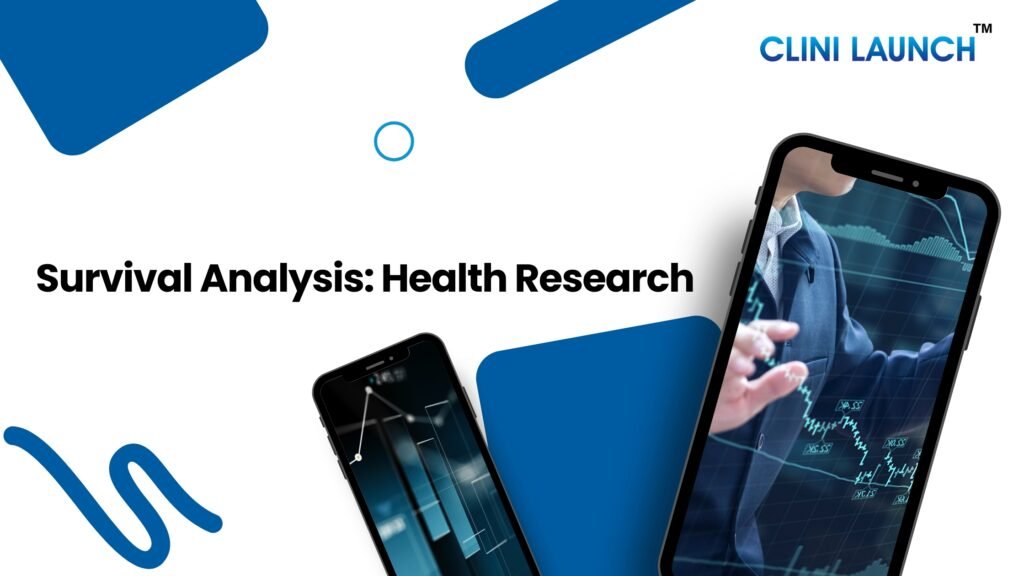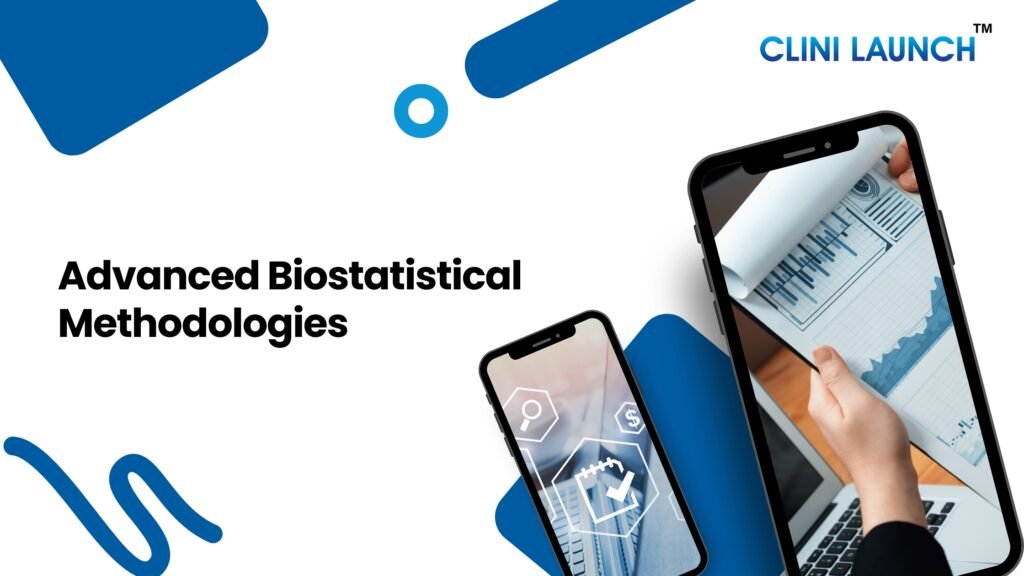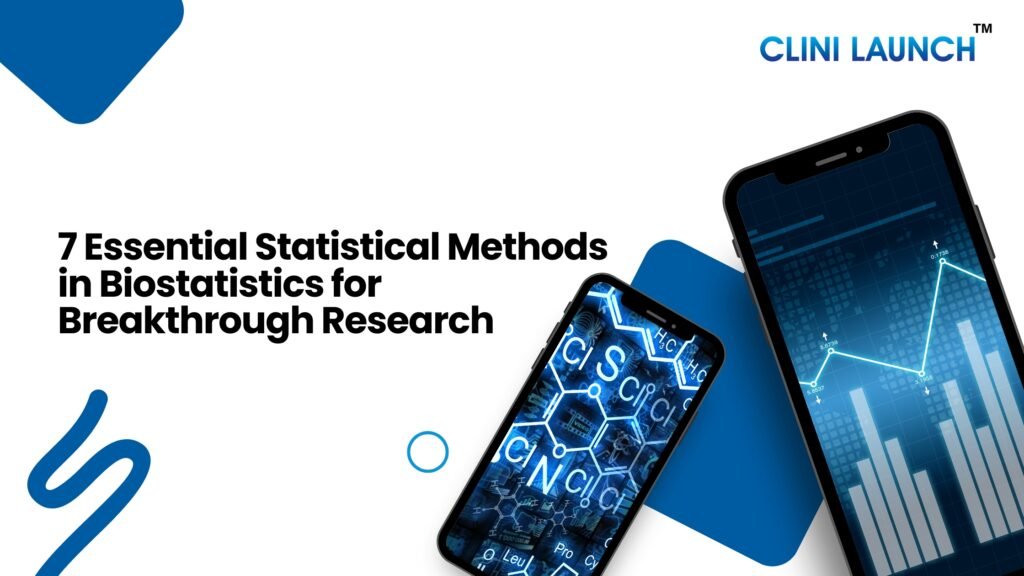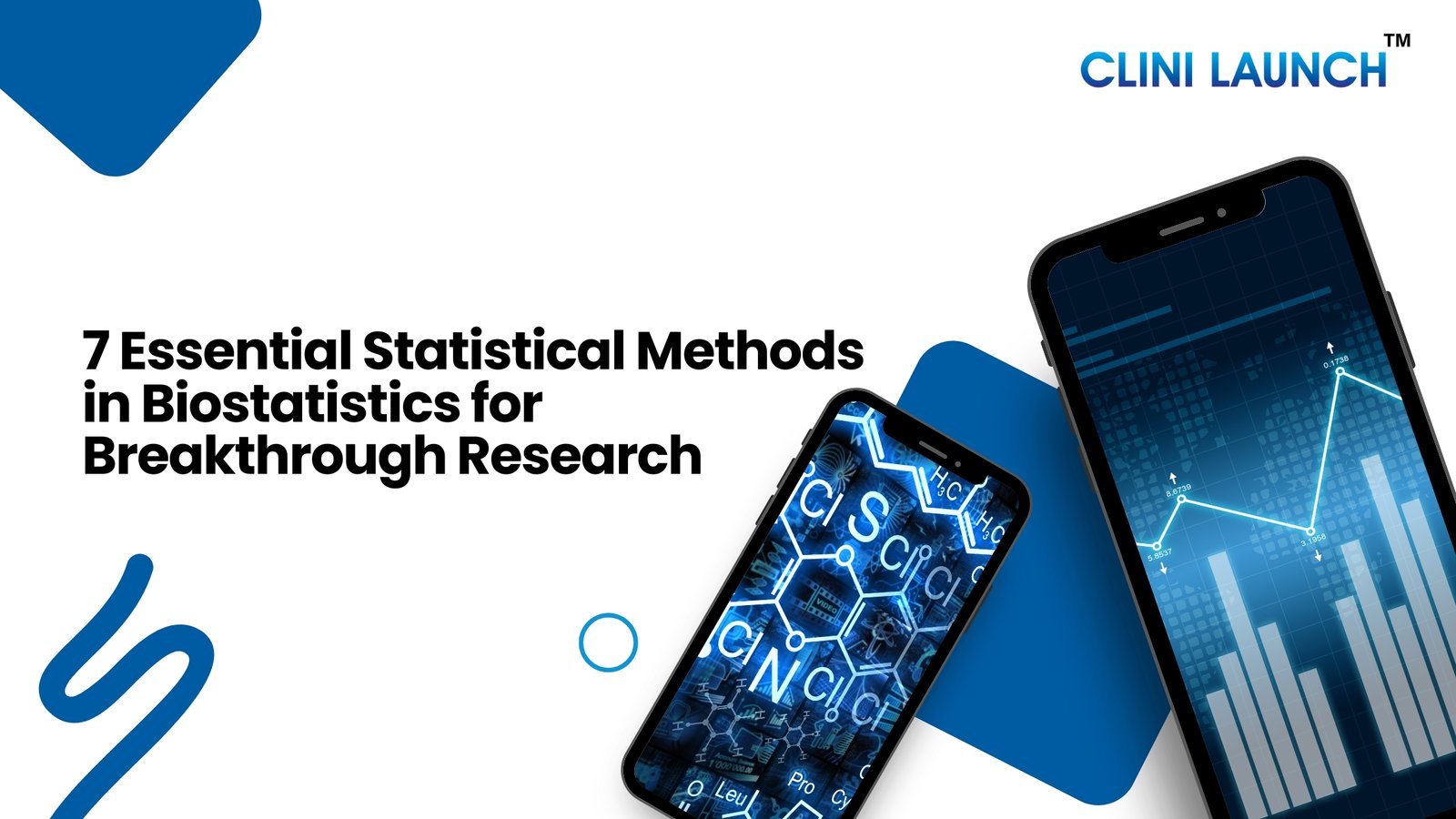From clinical trials evaluating new therapies to epidemiological studies investigating disease patterns, the transparent volume and complexity of information demands a rigorous approach. This is where biostatistics step in, providing the indispensable tools and methodologies to transform raw data into meaningful insights. At its core, biostatistics is the application of statistical methods to data derived from biological and health-related fields. It’s science that enables researchers to design robust studies, analyze complex datasets, interpret findings accurately, and ultimately, make informed decisions that impact public health and medical advancements.
Without sound statistical analysis, even the most meticulously collected data can lead to erroneous conclusions. Understanding the fundamental statistical analysis methods is not just beneficial; it’s absolutely critical for anyone involved in healthcare research, drug development, public health initiatives, or medical innovation.
This blog post delves into seven essential statistical methods that form the backbone of modern biostatistics, demonstrating how they are leveraged to uncover critical patterns, test hypotheses, and drive evidence-based practice. Whether you’re a budding researcher, a seasoned clinician, or simply curious about the science behind medical breakthroughs, grasping these concepts will illuminate the path from data to discovery.
Enroll Now: Biostatistics Course
Foundations of Descriptive Analysis
Before diving into complex relationships and predictions, the first and most crucial step in any statistical analysis is descriptive analysis. This fundamental branch of statistical methods focuses on summarizing and describing the main features of a dataset. Think of it as painting a clear picture of your data, allowing you to understand its basic characteristics without making any generalizations beyond the observed sample.
Measures of Central Tendency
These measures tell us about the “typical” or “average” value within a dataset. They help us pinpoint where the data tends to cluster.
- Mean: The arithmetic average. Calculate by summing all values and dividing them by the total number of observations. While widely used, it’s sensitive to extreme values (outliers). For example, if you’re looking at the average age of participants in a clinical trial, the mean gives you a quick snapshot.
- Median: The middle value when the data is arranged in ascending or descending order. If there’s an even number of observations, it’s the average of the two middle values. The median is robust to outliers, making it a better choice for skewed data distributions, such as income or highly variable patient response times.
- Mode: The most frequently occurring value in a dataset. The mode is particularly useful for categorical or nominal data, such as the most common blood type in a study population or the preferred treatment option among patients. A dataset can have one mode (unimodal), multiple modes (multimodal), or no mode.
Measures of Dispersion
While central tendency tells us about the center, measures of dispersion describe how spread out or varied the data points are.
- Range: The simplest measure of variability, calculated as the difference between the maximum and minimum values. It provides a quick sense of the data’s span but is highly sensitive to outliers.
- Variance: A more sophisticated measure that quantifies the average of the squared differences from the mean. It gives a precise idea of how many individual data points deviate from the average.
- Standard Deviation: The square root of the variance. This is perhaps the most reported measure of dispersion because it’s in the same units as the original data, making it easier to interpret. A small standard deviation indicates data points are clustered closely around the mean, while a large one suggests a wider spread. In clinical trials, understanding the standard deviation of a treatment outcome helps assess the consistency of the outcome.
- Interquartile Range (IQR): The range between the 25th percentile (Q1) and the 75th percentile (Q3) of the data. It’s a robust measure of spread, unaffected by extreme outliers, and is particularly useful for skewed distributions.
Data Visualization
Graphical representations are integral to descriptive analysis, providing intuitive ways to understand data patterns.
- Histograms: Bar charts that show the distribution of a continuous variable, illustrating its shape, central tendency, and spread. They are invaluable for understanding if data is normally distributed, skewed, or has multiple peaks.
- Box Plots (Box-and-Whisker Plots): Summarize the distribution of a continuous variable using quartiles. They clearly show the median, IQR, and potential outliers, making them excellent for comparing distributions across different groups.
- Bar Charts: Used for displaying the frequencies or proportions of categorical data.
- Scatter Plots: Illustrate the relationship between two continuous variables, helping to identify potential correlations.
Descriptive analysis provides the initial groundwork for any deeper statistical analysis. By thoroughly understanding the characteristics of your dataset, you lay a solid foundation for choosing appropriate inferential statistical methods and drawing valid conclusions.
Hypothesis Testing: Treatment Effects and Associations

Once the data has been described, the next logical step in biostatistics often involves hypothesis testing. This core statistical method allows researchers to make inferences about a larger population based on sample data. It’s about determining whether an observed effect or relationship in a study sample is likely due to chance or if it represents a true phenomenon in the population.
The Null and Alternative Hypotheses
Every hypothesis test begins with two competing statements:
- Null Hypothesis (H₀): This is the statement of no effect, no difference, or no relationship. For example, “There is no difference in blood pressure reduction between Drug A and placebo.”
- Alternative Hypothesis (H₁ or Hₐ): This is the statement that contradicts the null hypothesis, proposing that there is an effect, a difference, or a relationship. For example, “Drug A leads to a significant reduction in blood pressure compared to placebo.”
The goal of hypothesis testing is to collect evidence to either reject the null hypothesis in favor of the alternative or fail to reject the null hypothesis.
P-values and Significance Levels
The p-value is a critical component of hypothesis testing. It quantifies the probability of observing data as extreme as (or more extreme than) what was observed, assuming the null hypothesis is true.
- A small p-value (typically less than a predetermined significance level, denoted as α, often 0.05) suggests that the observed data is unlikely if the null hypothesis were true. In this case, we reject the null hypothesis.
- A large p-value suggests that the observed data is consistent with the null hypothesis, and we fail to reject the null hypothesis.
It’s crucial to understand that failing to reject the null hypothesis does not mean the null hypothesis is true; it simply means there isn’t enough evidence in the current study to conclude otherwise.
Common Hypothesis Tests in Biostatistics
T-tests: Used to compare the means of two groups.
- Independent Samples T-test: Compares means of two independent groups (e.g., comparing the average cholesterol levels of patients receiving two different diets).
- Paired Samples T-test: Compares means of two related groups or measurements from the same individuals at different times (e.g., comparing a patient’s blood pressure before and after a treatment).
ANOVA (Analysis of Variance): An extension of the t-test used to compare the means of three or more groups.
- One-Way ANOVA: Compares means when there’s one categorical independent variable with three or more levels (e.g., comparing the efficacy of three different drug dosages on a particular outcome).
- Two-Way ANOVA: Examines the effect of two independent categorical variables on a continuous outcome, and their interaction (e.g., studying the impact of both diet and exercise on weight loss).
- Chi-Square Tests: Used to examine the association between two categorical variables.
Chi-Square Test of Independence: Determines if there’s a significant association between two categorical variables (e.g., is there an association between smoking status and lung cancer diagnosis?).
- Chi-Square Goodness-of-Fit Test: Compares observed frequencies with expected frequencies to see if a sample distribution matches a hypothesized distribution.
- Correlation Analysis: While not strictly a hypothesis test in itself, it’s often used as a precursor or alongside hypothesis tests to assess the strength and direction of a linear relationship between two continuous variables.
- Pearson Correlation Coefficient (r): Measures the linear correlation between two continuous variables. Values range from -1 (perfect negative correlation) to +1 (perfect positive correlation), with 0 indicating no linear correlation. Hypothesis tests can be performed on correlation coefficients to determine if the observed correlation is statistically significant.
Hypothesis testing is fundamental to clinical research and public health, allowing us to move beyond mere observation to make data-driven decisions about the effectiveness of interventions, risk factors for diseases, and much more.
Correlation Analysis: While not strictly a hypothesis test in itself, it’s often used as a precursor or alongside hypothesis tests to assess the strength and direction of a linear relationship between two continuous variables.
Pearson Correlation Coefficient (r): Measures the linear correlation between two continuous variables. Values range from -1 (perfect negative correlation) to +1 (perfect positive correlation), with 0 indicating no linear correlation. Hypothesis tests can be performed on correlation coefficients to determine if the observed correlation is statistically significant.
Hypothesis testing is fundamental to clinical research and public health, allowing us to move beyond mere observation to make data-driven decisions about the effectiveness of interventions, risk factors for diseases, and much more.
Regression Analysis: Modeling Relationships and Predictions
Regression analysis is a powerful suite of statistical methods used to model the relationship between a dependent variable and one or more independent variables. It allows researchers to understand how changes in independent variables influence the dependent variable, and to predict future outcomes. This is a cornerstone of statistics for data analysis, particularly in understanding complex biological systems and disease progression.
Linear Regression: Predicting Continuous Outcomes
Linear regression is used when the dependent variable is continuous. It aims to find the “best-fit” straight line that describes the relationship between the variables.
- Simple Linear Regression: Models the relationship between one continuous dependent variable and one continuous independent variable. For example, predicting a patient’s blood pressure is based on their age. The equation is typically represented as Y=β0 +β1 X+ϵ, where Y is the dependent variable, X is the independent variable, β0 is the intercept, β1 is the slope, and ϵ is the error term.
- Multiple Linear Regression: Extends simple linear regression to include two or more independent variables that predict a continuous dependent variable. For instance, predicting blood pressure is based on age, BMI, and diet. This allows for controlling confounding factors and understanding the independent contribution of each predictor.
Key outputs from linear regression include the regression coefficients (slopes), which indicate the change in the dependent variable for a one-unit change in the independent variable, and the R-squared value, which explains the proportion of variance in the dependent variable explained by the model.
Logistic Regression: Predicting Binary Outcomes
Logistic regression is a statistical method used when the dependent variable is binary (dichotomous), meaning it has two possible outcomes (e.g., presence/absence of a disease, success/failure of a treatment).
- Instead of directly predicting the outcome, logistic regression models the probability of the outcome occurring. It uses a logistic function to transform the linear combination of independent variables into a probability between 0 and 1.
Example: Predicting the probability of developing diabetes based on factors like age, BMI, family history, and glucose levels.
- The output is often expressed as odds ratios, which indicate how much the odds of the outcome change for a one-unit increase in the independent variable, holding other variables constant.
Logistic regression is widely used in medical research for risk factor analysis, disease prediction, and evaluation of diagnostic tests.
Other Regression Variants
- Polynomial Regression: Used when the relationship between variables is curvilinear, fitting a curved line to the data.
- Cox Proportional Hazards Regression (Survival Analysis): A specialized form of regression used to analyze time-to-event data, such as time to disease recurrence or patient survival. It models the hazard rate (instantaneous risk of an event) as a function of predictors, widely applied in oncology and chronic disease research.
Regression analysis is a cornerstone of modern statistical analysis, enabling researchers to build predictive models, identify key determinants of health outcomes, and understand complex causal pathways, making it indispensable for statistics for data analysis in biostatistics.
Survival Analysis: Health Research

In many areas of biostatistics, particularly in clinical trials and epidemiology, the outcome of interest isn’t just whether an event happens, but when it happens. This “time-to-event” data is the focus of survival analysis, a specialized set of statistical methods that accounts for censoring (when the event of interest has not yet occurred for some participants by the end of the study).
Key Concepts in Survival Analysis
- Event: The occurrence of interest (e.g., death, disease recurrence, treatment failure, recovery from an illness).
- Time to Event: The duration from a defined starting point (e.g., diagnosis, start of treatment) until the event occurs.
- Censoring: A crucial aspect of survival data where the exact time of the event is unknown to some individuals.
- Right Censoring: The most common type, where an individual has not experienced the event by the end of the study, or is lost to follow-up, or withdraws from the study. We know they survived at least up to their last observation.
- Left Censoring: The event occurred before the start of observation.
- Interval Censoring: The event occurred within a known time interval, but the exact time is unknown.
Kaplan-Meier Curves: Visualizing Survival Probabilities
The Kaplan-Meier estimator is a non-parametric statistical method used to estimate the survival function from observed survival times.
- It produces a Kaplan-Meier curve, a step-like graph that displays the probability of surviving over time.
- These curves are frequently used to compare the survival experience of different groups (e.g., treatment vs. placebo, different patient cohorts).
- For example, in an oncology trial, a Kaplan-Meier curve might show the percentage of patients alive over several years for those receiving a new drug compared to standard care.
Log-Rank Test: Comparing Survival Curves
The Log-Rank test is a non-parametric hypothesis test used to compare the survival distributions of two or more groups.
- It determines if there is a statistically significant difference in survival curves between groups.
- For instance, it can assess if a new treatment leads to significantly longer survival times than an existing one.
Cox Proportional Hazards Model: Incorporating Covariates
The Cox Proportional Hazards model is a semi-parametric regression model widely used in survival analysis.
- It allows researchers to examine the effect of multiple covariates (e.g., age, sex, disease stage) on the hazard rate (the instantaneous risk of an event) while accounting for censored data.
- The “proportional hazards” assumption means that the effect of a covariate on the hazard rate is constant over time.
Example: A Cox model can identify risk factors that increase or decrease the risk of mortality in a patient population, independent of other factors.
Survival analysis is an indispensable statistical method in clinical epidemiology, drug development, and public health, offering robust ways to analyze time-dependent outcomes and understand the impact of various factors on survival or time to event.
Sample Size Determination and Power Analysis
One of the most critical preliminary steps in any research study, especially in biostatistics, is determining the appropriate sample size. An underpowered study may fail to detect a true effect, while an overpowered study wastes resources and time. Sample size determination and power analysis are statistical methods that ensure a study has sufficient statistical power to detect a clinically meaningful effect if one truly exists.
The Importance of Sample Size
- Ethical Considerations: Using too many participants can expose more individuals to potential risks than necessary. Using too few means the study might not yield conclusive results, wasting participants’ time and effort.
- Statistical Validity: An inadequate sample size can lead to:
- Type II Error (False Negative): Failing to detect a real effect when one exists. This is a common pitfall in underpowered studies.
- Imprecise Estimates: Small samples can lead to wide confidence intervals, making it difficult to pinpoint the true effect size.
- Resource Optimization: Properly calculating sample size helps in efficient allocation of resources (time, money, personnel).
Key Factors in Sample Size Calculation
To determine the required sample size, several parameters must be considered:
- Significance Level (α): The probability of making a Type I error (false positive) – typically set at 0.05 (or 5%). This means there’s a 5% chance of rejecting a true null hypothesis.
- Statistical Power (1−β): The probability of correctly detecting a true effect when it exists – commonly set at 0.80 (or 80%). This means there’s an 80% chance of avoiding Type II errors.
- Effect Size: The magnitude of the difference or relationship that the researchers wish to detect. This is often based on previous research, pilot studies, or clinical significance. A smaller effect size requires a larger sample size to detect.
- Variability (Standard Deviation): For continuous outcomes, the expected variability in the data. Higher variability typically requires a larger sample size.
- Study Design: The type of study design (e.g., randomized controlled trial, observational study) and the statistical test chosen will influence the formula used for sample size calculation.
Power Analysis
Power analysis can be performed either priori (before the study) to determine the required sample size or post hoc (after the study) to calculate the power of a completed study, given its sample size and observed effect size. While post hoc power analysis is often criticized for its limited utility in interpreting non-significant results, priori power analysis is indispensable for designing rigorous studies.
By meticulously planning the sample size, researchers enhance the reliability and validity of their findings, ensuring that the statistical analysis is meaningful and the conclusions drawn are robust. This proactive application of statistical methods prevents many common pitfalls in research.
Advanced Biostatistical Methodologies

While the core statistical methods discussed above form the foundation, modern biostatistics continues to evolve, incorporating more sophisticated techniques to tackle increasingly complex data challenges. These advanced statistical analysis methods are crucial for extracting deeper insights from large and intricate datasets.
Bayesian Statistics:
Unlike traditional frequentist statistical methods that rely solely on current data, Bayesian statistics incorporate prior knowledge or beliefs about a parameter into the analysis.
- It uses Bayes’ Theorem to update probabilities as more data becomes available.
- Key Concept: Instead of a p-value, Bayesian analysis provides a posterior distribution of the parameter, which represents the updated probability of the parameter after observing the data. This allows for direct probability statements about hypotheses.
- Applications: Particularly useful in situations with limited data, or when there’s strong historical evidence, such as in rare disease studies or personalized medicine where individual patient characteristics inform treatment decisions.
Machine Learning in Biostatistics: Predictive Power from Big Data
The explosion of “big data” in healthcare, from electronic health records to genomics, has led to the increasing integration of machine learning algorithms into biostatistics. While traditional statistical methods often focus on hypothesis testing and inference about relationships, machine learning excels at prediction and pattern recognition.
- Predictive Modeling: Algorithms like Random Forests, Support Vector Machines, and Neural Networks can analyze vast datasets to predict disease risk, treatment response, or patient outcomes with high accuracy.
- Classification: Identifying patient subgroups based on complex molecular profiles.
- Clustering: Discovering hidden patterns and groupings within patient data without prior knowledge of those groups.
- Applications: Drug discovery, personalized medicine (identifying optimal treatments for individuals), disease diagnosis, and public health surveillance.
Causal Inference: Moving Beyond Correlation
One of the greatest challenges in observational studies is distinguishing between causes. Causal inference is a field within statistics for data analysis that employs specialized statistical methods to estimate the causal effect of an intervention or exposure, even in the absence of a randomized controlled trial.
- Techniques: Propensity score matching, instrumental variables, and difference-in-differences are some methods used to minimize confounding and draw stronger causal conclusions from observational data.
- Applications: Understanding the true impact of public health interventions, long-term effects of environmental exposures, or real-world effectiveness of drugs outside of highly controlled trial settings.
These advanced methodologies extend the capabilities of statistical analysis, enabling researchers to answer more nuanced questions, uncover complex relationships, and make more precise predictions, further solidifying the role of statistical methods in shaping the future of healthcare.
Final Thoughts
The journey from raw data to actionable insights in biological and health research is complex yet immensely rewarding. At every turn, statistical methods serve as the compass, guiding researchers through the intricacies of data collection, descriptive analysis, hypothesis testing, and predictive modeling. From understanding the basic characteristics of a dataset through descriptive analysis to employing advanced techniques like survival analysis and machine learning, a strong grasp of statistics for data analysis is not just an advantage—it’s a necessity for driving meaningful scientific discovery and evidence-based practice.
In the fast-evolving landscape of healthcare and life sciences, the demand for robust statistical analysis methods has never been higher. Whether it’s designing a groundbreaking clinical trial, identifying new disease biomarkers, or evaluating the effectiveness of public health interventions, the precision and power of biostatistics are indispensable.
Ready to Elevate Your Research with Expert Statistical Support?
Navigating the complexities of statistical methods can be challenging, but you don’t have to do it alone. CliniLaunch Research specializes in providing comprehensive biostatistical services, from study design and sample size determination to advanced statistical analysis and interpretation of results. Our team of experienced biostatisticians ensures that your research is rigorously designed, flawlessly executed, and yields credible, impactful findings.
Visit CliniLaunch Research today to learn more about our biostatistics services and how we can help you achieve your research goals.
References
Statistical Methods: Definition, Types, Process & Analysis
Statistical Methods: Definition, Types, Process & Analysis
Statistical Methods Resources
https://ctsi.utah.edu/cores-and-services/triad/sdbc/resources/statistical-methods





